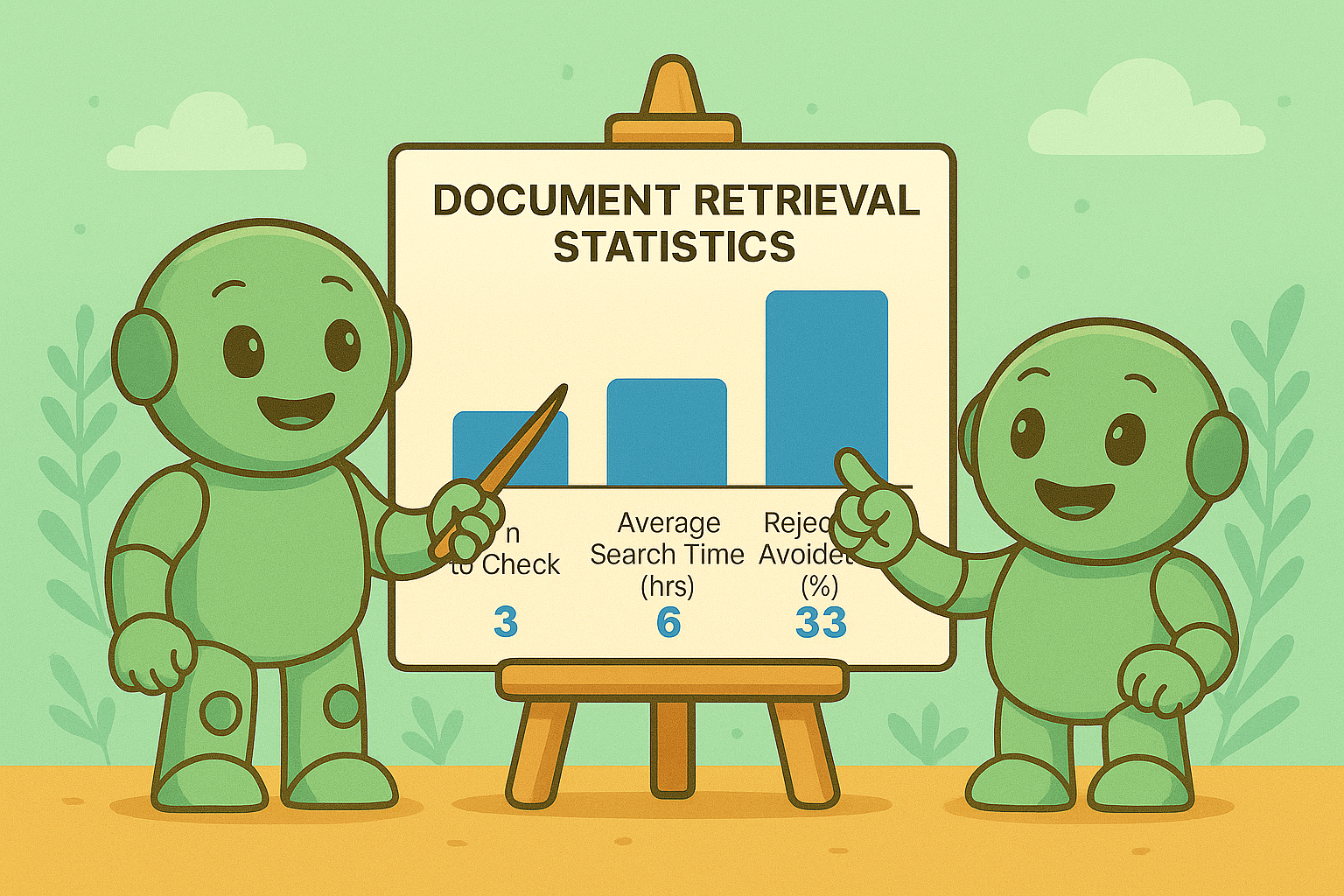How to Trademark Artwork: A Creative's Guide to Protection
Why Your Art Actually Needs Trademark Protection

Copyright and trademark. Two words that get thrown around a lot, and often confused. They do both protect your creative work, but in different ways. Think of copyright as safeguarding the actual art itself—the painting, the sculpture, the design. You automatically get copyright protection the moment you create something. It prevents others from straight-up copying your work.
But here's the thing: copyright doesn't protect your branding. That's where trademarks come into play. Copyright protects the what, trademark protects the who. It's all about your brand identity.
Let me give you an example. Say you've created a super cool character for a series of paintings. Copyright stops people from reproducing those paintings. But trademarking? That lets you protect the character's name, a logo you designed for the series, or even a distinctive color palette you consistently use. Someone could technically create similar artwork, but they can't use your branding, which prevents customer confusion and keeps your brand distinct.
This becomes especially important when your art starts making money. I've spoken to so many artists who poured their heart and soul into building a brand around a unique style, only to find cheap knockoffs using similar imagery and even their brand name on stuff sold online. Without trademark protection, they were stuck. One artist I know lost thousands in potential revenue before finally getting a trademark – a whole headache they could've avoided by trademarking earlier.
And with online marketplaces exploding, trademark protection is more critical than ever. It's so easy for infringers to create and sell counterfeit products, especially with artwork. A strong trademark gives you the legal muscle to fight back and protect your reputation. Globally, trademarking artwork is becoming essential for artists and creative businesses. We're seeing a huge increase in both traditional and non-traditional trademark registrations. In 2023, almost 62% of global trademark applications were handled by just five intellectual property offices. This shows how important some major markets are, but also the hurdles faced by other regions. Discover more insights about global trademark trends. At the end of the day, securing a trademark is about building a brand that's not just creatively awesome, but also legally protected for years to come.
Research That Actually Protects You From Expensive Mistakes
So, you're ready to trademark your artwork. Fantastic! But before you dive headfirst into the application, there's some essential groundwork to cover. Think of it like building a solid foundation for your trademark – one that can withstand any storm. I've seen artists skip this step and end up in costly legal battles, and it's not pretty.
This initial research might not be the most exciting part of the process, but it's absolutely vital for avoiding expensive rejections down the line. The goal is to identify any potential conflicts before you invest in an application that might get rejected. Essentially, you're checking to see if any existing trademarks are too similar to yours, which could cause confusion in the market.

The infographic above shows the effort involved in trademark research and what you stand to gain. Searching three key databases can take around eight hours on average, but that investment can drastically increase your chances of success. In fact, doing your homework can help you avoid up to 35% of potential rejections. That's time, money, and stress saved.
Free vs. Paid Search Tools: Finding the Right Balance
There are several tools out there to help with your search, each with its own strengths and weaknesses. The USPTO's Trademark Electronic Search System (TESS) is your free starting point. It might seem a little daunting at first, but it's crucial for uncovering registered trademarks. Consider it your first line of defense. USPTO
Free online databases like WIPO's Global Brand Database can expand your search to international trademarks. WIPO These are great for getting a broad overview, but they might not be as detailed as paid options.
Paid services like Corsearch or CompuMark offer more comprehensive searches across a wider range of databases, including state and common law trademarks. Corsearch CompuMark They're worth considering if your artwork is core to your business and you're willing to invest a bit more for that extra protection.
To help you compare, I've put together a handy table:
Before we jump into the table, remember this isn't just about ticking boxes. It's about protecting your creative work and building a strong brand. Choosing the right tool is a crucial first step.
Essential Trademark Search Tools Comparison: Compare free vs. paid trademark search tools, their features, coverage, and reliability for artwork searches
| Tool Name | Cost | Database Coverage | Best For | Limitations |
|---|---|---|---|---|
| USPTO's TESS | Free | US registered trademarks | Initial screening, identifying direct conflicts | Can be complex to use, doesn't cover state or common law trademarks |
| WIPO's Global Brand Database | Free | International trademarks | Broad overview of global trademark landscape | Not as comprehensive as paid options, may miss nuanced similarities |
| Corsearch | Paid | Comprehensive coverage (US and international, registered, state, and common law) | Thorough searches, complex trademark landscapes, professional assistance | Cost can be a factor for smaller businesses |
| CompuMark | Paid | Similar to Corsearch, wide range of databases | Thorough searches, large businesses, advanced features | Cost can be a factor for smaller businesses |
Key takeaway: Free tools are a good starting point, but paid tools offer more comprehensive protection, especially if your artwork is a significant part of your brand. Consider your budget and the level of risk you're willing to take. A little investment now can save a lot of heartache later.
Application Prep Without the Legal Nightmares

The USPTO website is your starting point, and honestly, it's a pretty good one. They've got FAQs, tutorials, all sorts of stuff to help you figure out how to trademark artwork. Spend some time poking around; it'll likely answer a lot of your initial questions and give you a good foundation in the application requirements.
Demystifying the Application: A Plain-English Guide
Okay, so the application itself. I know, it can feel a bit daunting. But it’s really not as bad as it seems. I've been there, done that, and I’m here to tell you it’s totally manageable. First, think about classification. This is basically what your trademark covers. For artwork, you're usually looking at Class 41 (educational and entertainment services) or Class 42 (design services).
But here’s the thing: if you're selling stuff with your art on it – t-shirts, prints, whatever – you’ll also need to include the classes related to those goods. So, t-shirts would be Class 25. It’s a little tricky, so looking at successful trademark applications for similar artwork can be super helpful.
Next, you have to describe your artwork. Be clear and concise. What makes it stand out? Is it a particular character you’ve created? A unique painting style? The more specific you are, the better. I learned this the hard way. My first description was too general and I got an office action (basically, the USPTO saying, "Nope, gotta be more specific"). I had to go back and really pinpoint what made my style unique.
Proving Commercial Use: Showing You're Serious
This is where a lot of people trip up: proving commercial use. You need to show the USPTO that you’re actually using your trademark in the real world, in commerce. Usually, this means providing specimens. Think photos of your art being used on the products or services you're selling. Maybe your artwork is displayed at a gallery, or maybe it's on your website where you sell prints. It's all about showing the USPTO that your trademark isn’t just theoretical, it's part of your business. For more info on trademarking in general, our guide on trademarking a business name might be helpful.
Image Perfect: Photography Tips for Success
Those photos of your artwork? They have to meet USPTO standards. Clear, high-resolution images are a must. Simple background, good lighting – really showcase the details of your work. Think of it like putting together a portfolio. It sounds simple, but blurry photos can cause delays, so trust me, it’s worth the extra effort to get it right.
Finally, there's the matter of picking the right goods and services categories. Be specific, but don’t box yourself in. You want your trademark to cover what you're doing now and what you might do in the future. It’s a balancing act. Again, looking at what other artists in your field have done can be a good guide.
Trademarking your art doesn't have to be a nightmare. By understanding these key parts of the process and learning from the experiences of others, you can navigate the application process and protect your work.
Surviving the Filing Process Like a Pro
Submitting your trademark application feels like a huge win, but honestly? It's just the starting line. The race to registration can be a long one, but I'm here to share some insider tips to help you cross the finish line.
Understanding the Timeline and Initial Examination
After you hit "submit," the USPTO examining attorney takes over. They'll give your application a thorough once-over, checking for completeness, making sure it follows the rules, and looking for any similar trademarks already out there. This initial review usually takes 3-6 months. I know, it sounds like forever, but trust me, patience is a virtue here. The USPTO processes a ton of applications.
Navigating Office Actions: Turning Rejections into Approvals
Now, it's possible you'll receive an office action. This happens when the examining attorney finds something that needs clarification or correction. It's not a rejection, more like a request for more information. Don't panic! These are common and often easily fixed. The secret is to write a clear, concise response, explaining exactly how your trademark meets the requirements and providing real-world examples of how your artwork is used commercially.
I've been there myself. I received an office action on one of my applications because the examiner felt my description was too broad. I went back, added more specific examples of what made my artwork unique, and resubmitted. It worked! The examiner accepted my revised description, and my trademark was eventually registered. Often, a little extra detail is all it takes.
Knowing When to Seek Professional Help
You can absolutely handle many office actions on your own. However, sometimes getting expert advice is the smartest move. If you're facing tricky legal questions or just plain confused by the examiner's request, a trademark attorney can be a lifesaver. They understand the intricacies of trademark law and can present your case more effectively, potentially saving you both time and headaches.
This also brings me to another important point: budgeting. Trademarking costs money, and unexpected expenses like responding to office actions or hiring an attorney can pop up. Planning for these potential costs upfront will save you stress later on.
Publication, Opposition, and Final Registration
Once your application passes examination, it's published in the Official Gazette for a 30-day period. This allows anyone to oppose your trademark registration. While the word “opposition” might sound intimidating, it's honestly quite rare.
Assuming nobody objects (and they usually don’t), and you've paid all the required fees, your trademark will be officially registered! High five! You did it! You'll receive a certificate of registration – your official proof of ownership and a symbol of your hard work.
Remember, the world of trademarks is always evolving. Technology is changing how we approach intellectual property, from AI-powered translation tools to blockchain for IP management. Look at patent filings: they hit a record 3.45 million in 2024, a 4% year-over-year increase, highlighting the overall growth in intellectual property activity. Discover more insights here. This trend extends to trademark filings too, especially for creative work. For more helpful advice on this topic, check out this guide: Registering a Business Name.
Staying Organized During the Process
The trademarking process can take several months, so staying organized is essential. Set up a system to track deadlines, communications with the USPTO, and any other important documents. Even a simple spreadsheet or a dedicated folder can keep you on top of things and ensure you don’t miss any critical steps. The road to registration might be long, but with a little preparation and patience, you can navigate it successfully and protect your valuable artwork.
Taking Your Protection Global Without Breaking the Bank

So, you're dreaming big – envisioning your artwork captivating a global audience. That’s awesome! But the thought of international protection can feel like scaling Mount Everest. Take a deep breath, it doesn’t have to be that daunting. We’re not talking about registering in every single country (unless you’re a corporate behemoth, and even then, maybe not). It's all about strategy: focusing on the markets where you’re actually making moves and scaling your protection in tandem with your growth.
One route is the Madrid Protocol, an international treaty that simplifies registering trademarks across multiple countries. Think of it as your trademark protection hub. You file one application, in one language, and pay one set of fees, specifying the countries where you want that coverage. This streamlines things considerably, especially if you're eyeing several countries.
But the Madrid Protocol isn't a one-size-fits-all solution. Sometimes, direct filing – applying straight to each country's trademark office – is the smarter play, especially if you’re only focusing on a few key markets. It can offer more control and flexibility, but it does add to the administrative workload.
Consider where your audience is concentrated, where your sales are coming from, and where you see future opportunities blooming. I know an artist who concentrates on selling prints in Europe. The Madrid Protocol was a perfect match, covering her main European markets without the need for blanket worldwide protection. Smart, right? She focused on protecting her work where she was generating income.
Navigating Different Legal Systems: Practical Tips
Managing different legal systems may sound like a legal labyrinth, but there are practical steps you can take. First, dive into the specific trademark laws of each country you’re targeting. Some have stricter rules about what they consider “distinctive,” while others might have different requirements for demonstrating commercial use. A good starting point is Trademark Search Availability: Quick Tips to Protect Your Brand.
Second, be ready for translation hurdles. Accurately translating your artwork's description, your brand name, and any supporting documents is paramount. Professional translation services are a worthwhile investment, especially for legal materials. A poorly translated application can lead to delays or outright rejection.
Finally, factor in cultural nuances. Imagery that’s perfectly acceptable in one country could be offensive or inappropriate in another. Researching cultural sensitivities and adapting your branding accordingly can prevent unintended missteps. This isn't about diluting your artistic vision, but about demonstrating respect and understanding of different cultural contexts.
The international trademarking landscape is complex, with varying legal systems and regional rules. For example, in the EU, trademark applications saw a 4% increase between 2023 and the first nine months of 2024, reaching 112,209 filings. Mainland China accounted for almost 17% of those applications, highlighting the growing influence of China’s creative scene. You can find more insights here. These nuances underscore the challenges artists face when going global, such as language barriers and varying legal interpretations.
To help you navigate the international waters, here's a comparison of some common filing strategies:
International Filing Options for Artists
This table compares different international trademark filing strategies, their costs, coverage, and who they are best suited for. It's a quick snapshot to help you weigh your options.
| Filing Method | Countries Covered | Approximate Cost | Timeline | Best For |
|---|---|---|---|---|
| Madrid Protocol | Designated countries (over 100) | Varies depending on countries selected | 12-18 months | Artists targeting multiple countries within the Madrid system |
| Direct Filing | Individual countries | Varies by country | Varies by country, typically 6-12 months | Artists focusing on a few specific countries outside the Madrid system or needing more control over the process |
| European Union Trademark (EUTM) | All EU member states | Relatively lower than multiple direct filings | 6-9 months | Artists primarily selling within the EU |
As you can see, the choice of filing method really hinges on your specific needs and target markets. There’s no magic bullet, but understanding the pros and cons of each approach empowers you to make the best decision for your artwork.
Protecting your artwork internationally requires planning and effort. But by being strategic, prioritizing your target markets, and navigating the intricacies of different legal systems, you can confidently expand your reach and protect your creative work on a global scale.
Protecting What You've Built Without Losing Sleep
Getting that trademark registration certificate is a fantastic feeling, a real milestone. But let’s be honest, the work doesn't stop there. Think of it less like reaching the summit of a mountain and more like planting a tree. You've done the hard part of getting it in the ground, but now you need to make sure it thrives.
Maintaining Your Trademark: Renewals and Monitoring
First things first: renewals. Unlike copyright, which typically lasts a lifetime plus 70 years, trademarks require regular attention. In the US, you'll need to file for renewal and pay a fee every 10 years. Seriously, put these dates on your calendar, set phone reminders, tattoo it on your arm (okay, maybe not that last one). Missing a renewal deadline could mean losing your trademark protection entirely, and nobody wants that.
Then there’s the matter of monitoring. This simply means keeping an eye out for anyone using your trademark without your permission. You don’t have to become an internet sleuth, but regular checks are a good idea. Simple Google searches for your trademark and any variations are a great starting point. Pay attention to similar artwork used commercially, particularly within your industry.
Enforcing Your Rights: Picking Your Battles
If you come across a potential infringement, don’t panic. Not every similarity requires legal action. If someone's using a similar color palette, but their artwork and branding are otherwise distinct, it might not be worth pursuing. However, if you find someone selling products with artwork nearly identical to yours, especially if they’re using your brand name or something confusingly similar, that's a major problem.
I once saw a friend's artwork blatantly copied and sold on t-shirts online. She was understandably furious. A simple cease and desist letter – a formal request to stop using her trademarked artwork – did the trick. They complied, and thankfully it didn't turn into a costly legal battle.
Remember, documentation is key. Keep records of where you saw the infringement: screenshots, product descriptions, anything that proves the violation. This becomes vital evidence if you need to take further action.
Maintaining Your Protection: Proper Use and Documentation
Using your trademark correctly is also crucial for maintaining its strength. Always use the ™ symbol next to your mark until you receive the official registration. After that, switch to the ® symbol. This signals to everyone that your mark is protected and reinforces your ownership.
Think of your trademark like a muscle – the more you use it, the stronger it becomes. Consistent use in commerce strengthens your trademark and makes it easier to defend if challenged. Document everything: how you're using your trademark, where it appears on your products, your marketing materials, your website – anywhere your art and branding are visible.
Navigating the Gray Areas
Trademark law isn't always straightforward. There are gray areas, especially as your work becomes more well-known. What exactly is “fair use”? What about parodies or artistic interpretations of your work? These are tricky questions, and sometimes you need professional legal advice. Don’t hesitate to seek guidance if you're unsure. A little preventative advice can save you a lot of headaches later on. Ultimately, protecting your trademark is about recognizing its value and taking the necessary steps to safeguard your hard work.
Your Trademark Action Plan That Actually Works
Turning knowledge into action is where the magic happens. This isn't some generic guide filled with fluff; this is a real-world roadmap, built for artists like you. Whether you're just starting out, ready to file, or thinking globally, we'll cover realistic timelines, budget-friendly strategies, and decision-making tailored to your artwork.
Starting Your Trademark Journey
First things first: research. The USPTO's TESS database is an excellent free resource. However, if your artwork is truly the heart of your brand, consider a professional search for extra peace of mind. Think carefully about exactly what you're trademarking. A specific character? Your logo? Your distinct artistic style? Defining this scope is critical.
Now, gather your proof. Think of this as building a case for your trademark’s active use. Photos of your artwork on products, website screenshots, sales records—anything that shows your trademark out in the wild. Meticulous documentation now will save you headaches later.
Ready to File? Essential Prep Steps
Once your research is solid, it’s time to prep your application. Choosing the right trademark classes is key. These classes categorize goods and services, so make sure you select the ones that accurately represent your artwork and any related products. Your artwork description should be concise and laser-focused on its unique qualities. This is where those high-quality photographs come in. Showcase your work clearly, making sure you follow the USPTO’s guidelines.
Thinking Globally? Strategic International Protection
Going global with your trademark doesn't mean filing everywhere at once. Prioritize your key markets. The Madrid Protocol can streamline registration across multiple countries, but direct filing might be more suitable for targeted protection. Research each country's specific trademark laws and cultural nuances – these can vary significantly. Professional translation of your application materials is non-negotiable. Trust me, it’s far cheaper than dealing with rejections due to language barriers.
Maintaining Your Trademark: Long-Term Protection
Congratulations, your trademark is registered! But the journey doesn't end there. Vigilance is key. Set reminders for renewals (they sneak up on you!) and keep an eye on the market for potential infringements. If you spot unauthorized use, document it thoroughly with screenshots and sales data. Consistent and correct use of your trademark is also essential. Remember those ™ and ® symbols—use them appropriately.
Ready to protect your creative vision and build a thriving brand? NameRobot offers powerful tools and resources for every step of the trademarking process, from generating unique names to conducting comprehensive trademark searches. Empower yourself to protect your art and build the brand you deserve. Start building your brand with NameRobot today!















